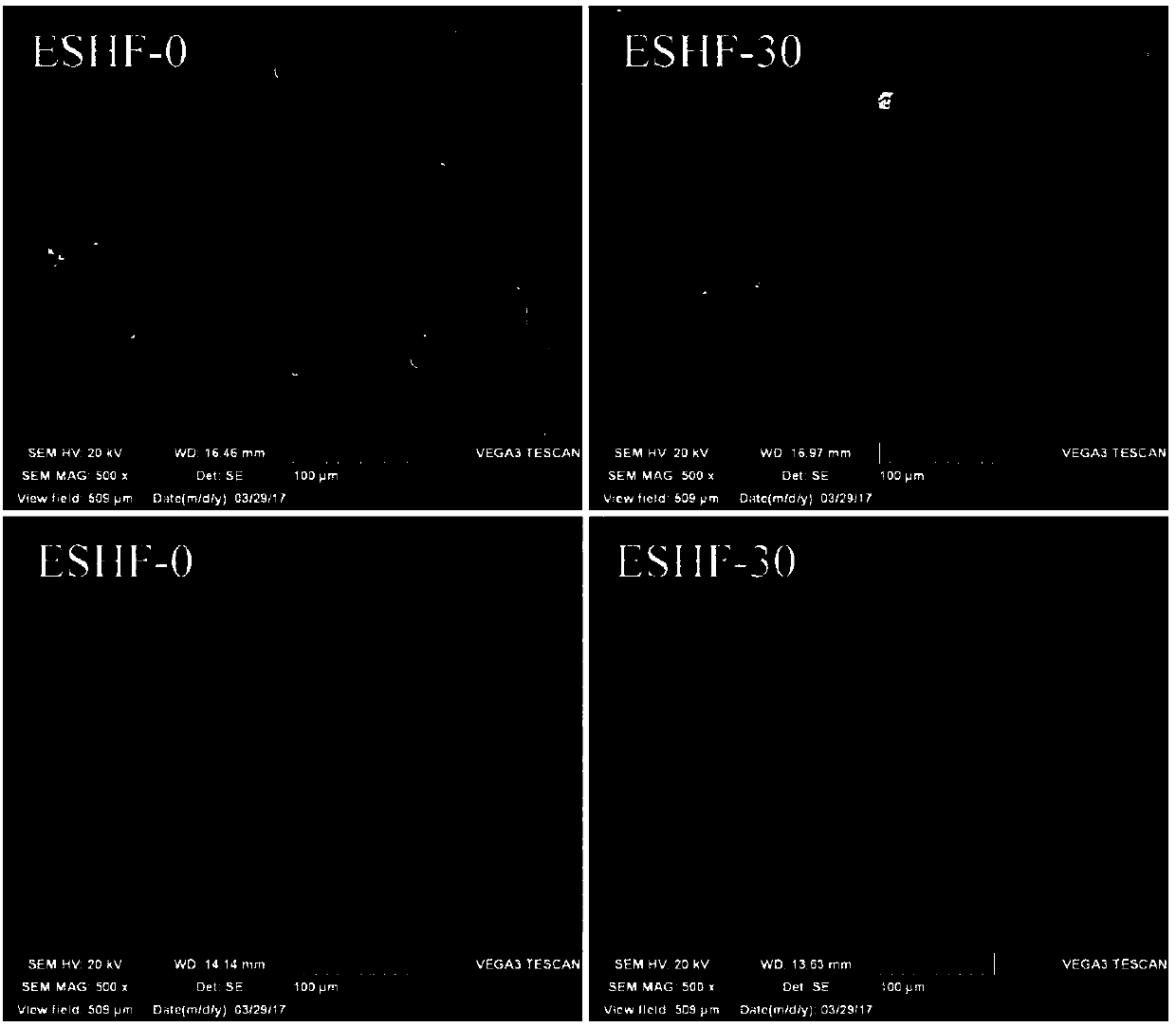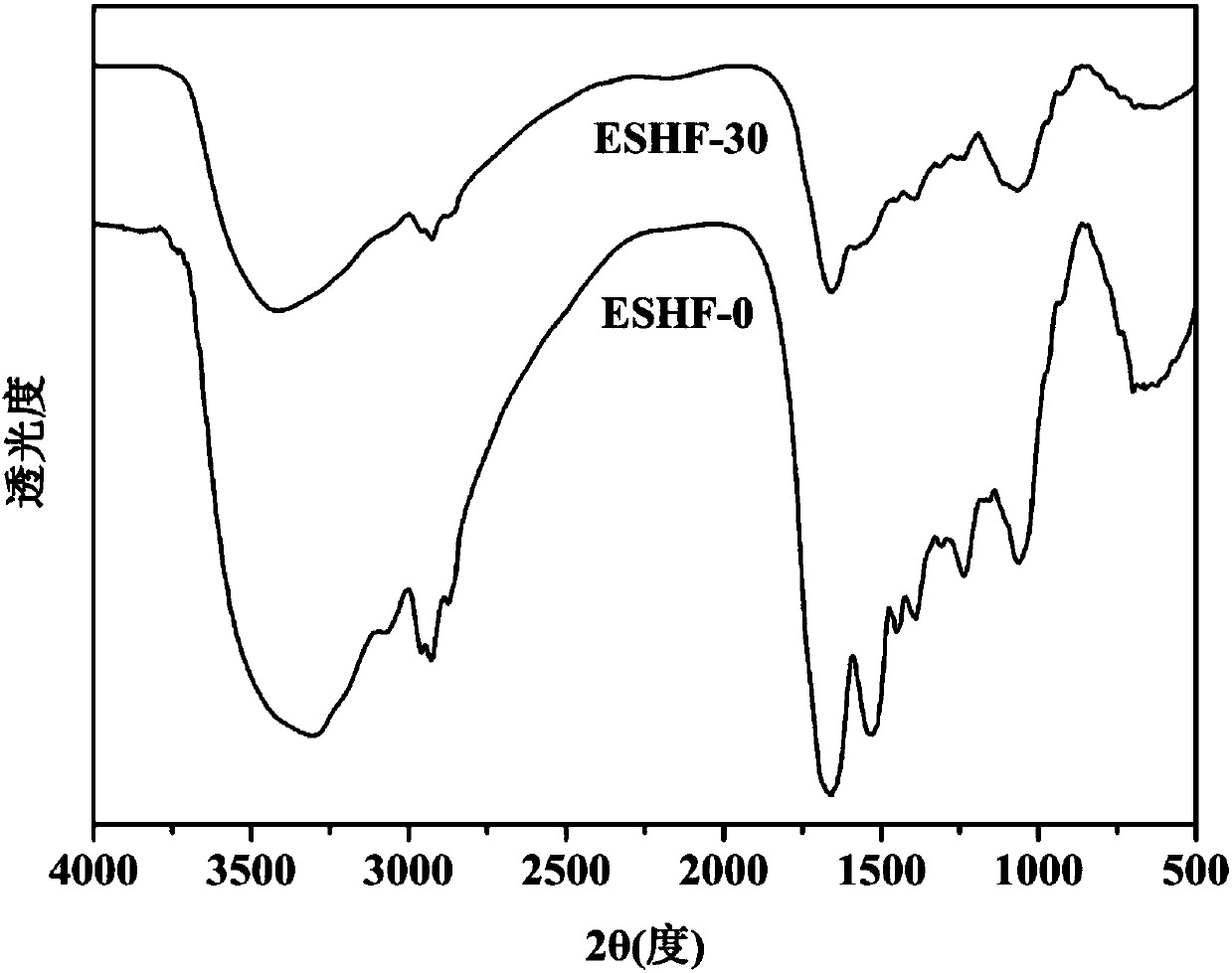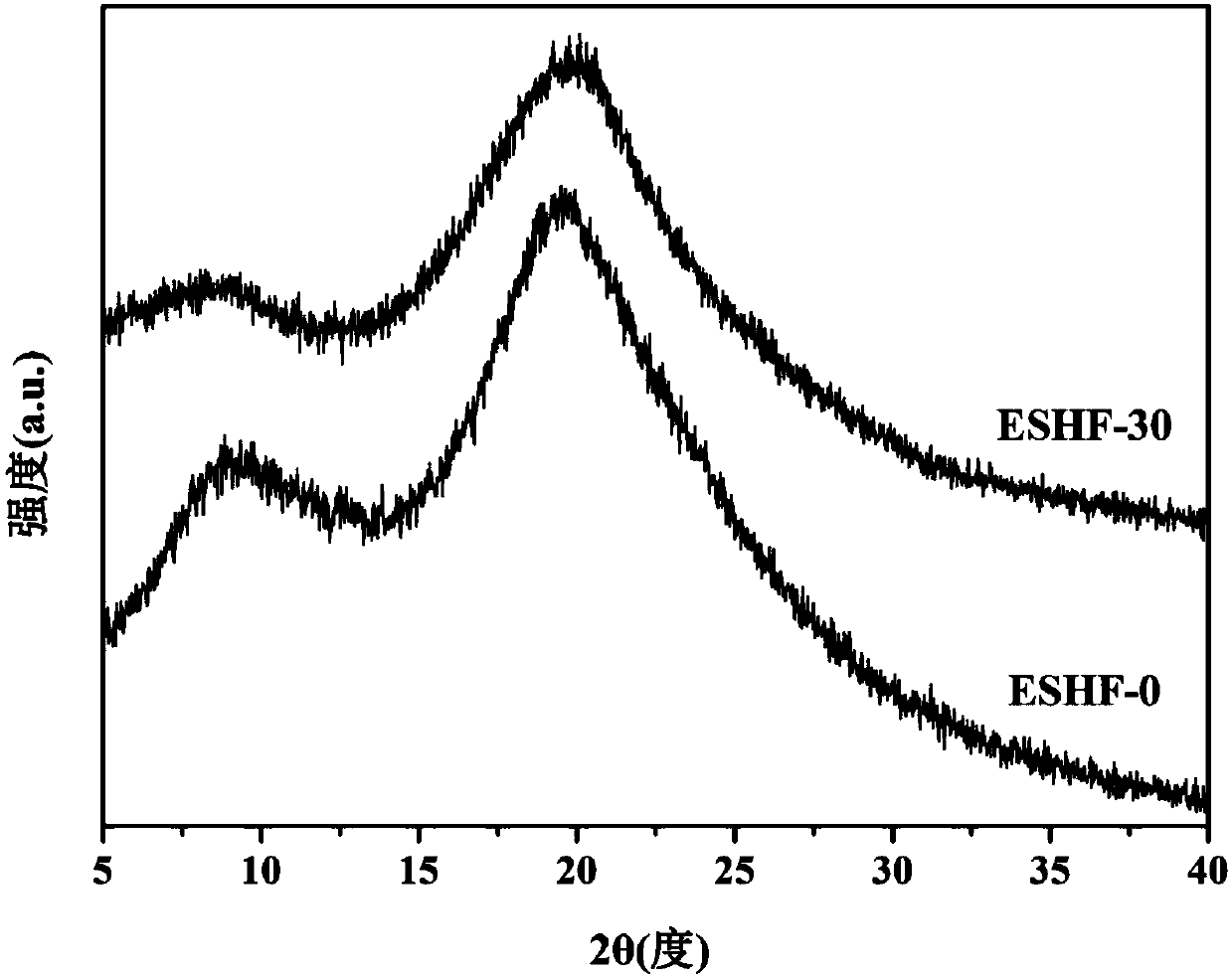Soy isolate protein/chitosan quaternary ammonium salt composite film and preparation method and application thereof
A technology of chitosan quaternary ammonium salt and soybean protein isolate, which is applied in the field of packaging materials and biomedical materials to achieve good mechanical properties, good water absorption and swelling ability, good mechanical properties and water absorption and swelling ability
- Summary
- Abstract
- Description
- Claims
- Application Information
AI Technical Summary
Problems solved by technology
Method used
Image
Examples
Embodiment 1
[0043] Disperse 10 g of soybean protein isolate evenly in 60 g of deionized water, add 30 g of 5% NaOH aqueous solution and continue stirring for 2 min to obtain a 10% soybean protein isolate solution. Add 5 g of epichlorohydrin dropwise to the above solution, stir at a medium speed at room temperature for 20 minutes, and then centrifuge at 3000 rpm for 10 minutes to remove air bubbles. Take 30g of the solution and pour it into a 10cm×10cm polytetrafluoroethylene plate, dry naturally at room temperature to obtain a semi-finished film, remove the film, soak the film in 5% acetic acid solution for 30min, then rinse it with running water overnight, and dry it again Finally, the pure soybean protein isolate film is obtained, which is marked as ESHF-0.
Embodiment 2
[0045]10g of soybean protein isolate was uniformly dispersed in 60g of deionized water, 30g of 5% NaOH aqueous solution was added and stirred for 2 minutes to obtain a 10% of soybean protein isolate solution. Add 5 g of chitosan quaternary ammonium salt to 95 g of deionized water, stir for 2 hours at a medium speed, and filter through a 200-mesh filter to obtain a chitosan quaternary ammonium salt solution with a mass fraction of 5%. Take 70g soybean protein isolate solution and 30g chitosan quaternary ammonium salt solution, mechanically stir evenly, add 4.25g epichlorohydrin dropwise to the above blended solution, stir at medium speed at room temperature for 20min, then centrifuge at 3000rpm for 10 minutes to remove bubble. Take 30g of the solution and pour it into a 10cm×10cm polytetrafluoroethylene plate, dry it naturally at room temperature to obtain a semi-finished composite film, remove the film, soak the film in 5% acetic acid solution for 30min, rinse it with running ...
Embodiment 3
[0047] The film materials obtained in Examples 1 and 2 were cut into samples with a size of 1 cm×1 cm. The surface and cross-sectional structure of the membrane material were sprayed with gold by an ion sputtering machine and then observed with a scanning electron microscope.
[0048] figure 1 It is the scanning electron micrograph of the surface and cross-sectional structure of the film material obtained in embodiment 1 and embodiment 2. As can be seen from the picture, the surface of ESHF-0 is uneven, and some small cracks can be seen from the section. This phenomenon is related to the hard and brittle properties of pure soybean protein isolate membrane. In contrast, the surface and cross-sectional structure of ESHF-30 are smoother, and no obvious microphase separation occurs. The results of scanning electron microscopy showed that there was a good affinity between soybean protein isolate and chitosan quaternary ammonium salt molecules.
PUM
 Login to View More
Login to View More Abstract
Description
Claims
Application Information
 Login to View More
Login to View More - R&D
- Intellectual Property
- Life Sciences
- Materials
- Tech Scout
- Unparalleled Data Quality
- Higher Quality Content
- 60% Fewer Hallucinations
Browse by: Latest US Patents, China's latest patents, Technical Efficacy Thesaurus, Application Domain, Technology Topic, Popular Technical Reports.
© 2025 PatSnap. All rights reserved.Legal|Privacy policy|Modern Slavery Act Transparency Statement|Sitemap|About US| Contact US: help@patsnap.com



